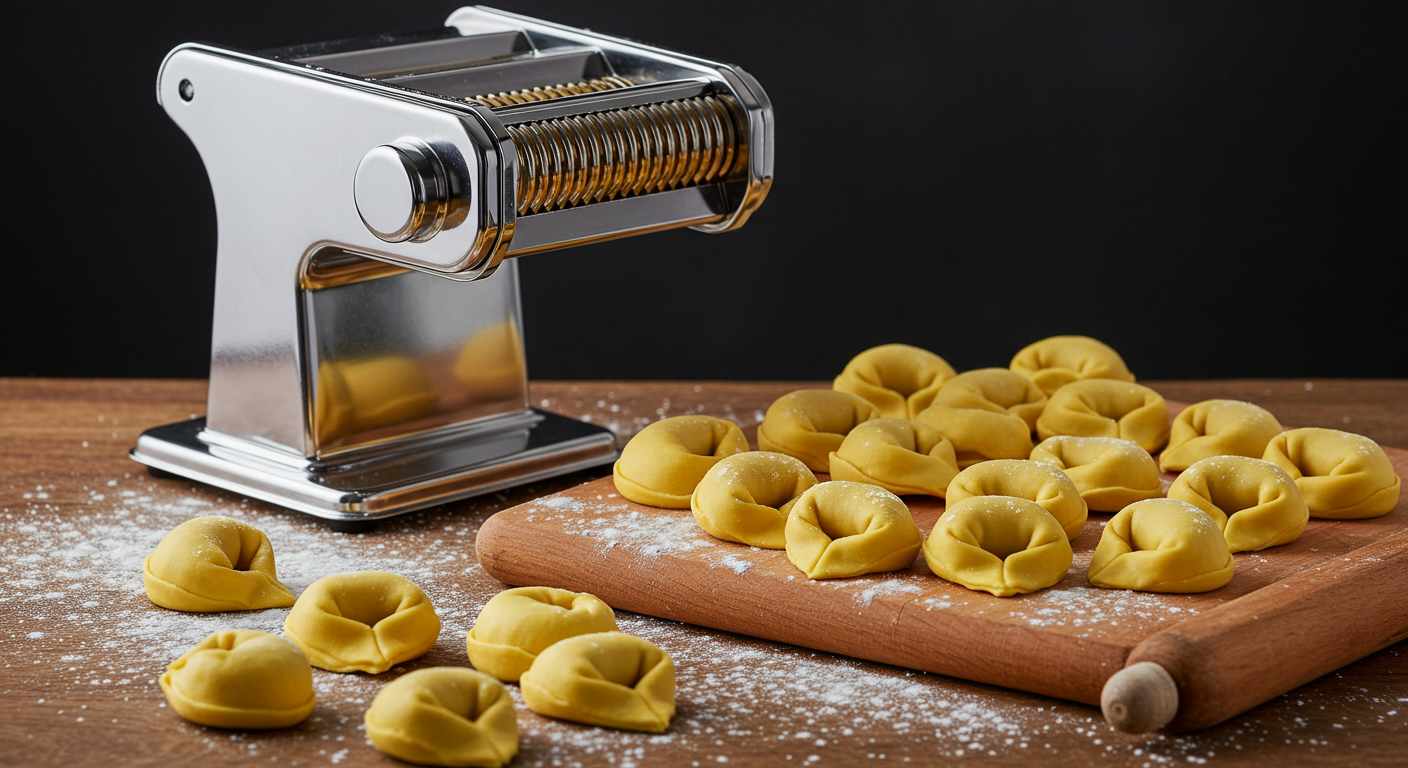The art of making tortellini is one of Italy’s most cherished culinary traditions. These small, ring-shaped pasta pieces, usually filled with a mixture of meat, cheese, or vegetables, are a symbol of fine Italian cuisine. While the handmade process has always been admired, it can be time-consuming and labor-intensive. This is where the tortellinatrice comes in. A tortellinatrice is a specialized machine designed to automate and simplify the process of making tortellini, ensuring consistency, efficiency, and high-quality results.
In today’s food industry, from large pasta factories to small artisanal kitchens, the tortellinatrice has become indispensable for professionals who want to keep up with demand without compromising authenticity.
What Is a Tortellinatrice?
A tortellinatrice is a pasta machine specifically engineered to produce tortellini in large quantities. Unlike general pasta machines, it focuses solely on the unique shape and filling of tortellini. It works by combining sheets of dough with the chosen filling and then shaping each piece into the traditional ring form.
The machine is designed to maintain uniformity in size and thickness, ensuring each tortellini looks and tastes the same. Many models are adjustable, allowing operators to modify filling portions, dough thickness, and speed according to their production needs.
History and Evolution of the Tortellinatrice
The origins of the tortellinatrice go hand-in-hand with the growing demand for Italian pasta worldwide. In the mid-20th century, as pasta production became more industrialized, traditional hand-rolled tortellini was too slow for commercial requirements. Engineers and pasta artisans collaborated to design the first tortellinatrice machines, which could replicate the precise folding and sealing technique used by expert chefs.
Over the years, the technology has advanced. Modern machines are often computerized, with stainless steel parts for hygiene and durability. They are now capable of producing thousands of tortellini per hour, making them a vital part of pasta production plants.
How the Tortellinatrice Works
The functioning of a tortellinatrice is a mix of mechanical precision and culinary tradition.
-
Dough Preparation – The machine requires pre-made pasta dough sheets, rolled to the correct thickness.
-
Filling Insertion – A hopper feeds the filling into the system. This can include meat, ricotta, spinach, or other creative combinations.
-
Shaping Process – The dough is cut into small portions, filled, and folded into the classic tortellini ring.
-
Sealing – Pressure ensures that the edges are tightly sealed, preventing the filling from leaking during cooking.
-
Output – The finished tortellini are released onto trays or conveyors, ready for drying, packaging, or cooking.
This combination of steps guarantees a balance between efficiency and authenticity, which is the hallmark of a good tortellinatrice.
Benefits of Using a Tortellinatrice
There are several reasons why pasta makers and restaurants invest in a tortellinatrice:
1. Consistency
Handmade tortellini can vary in size and filling, but the machine ensures uniformity.
2. Time-Saving
What might take hours by hand can be done in minutes with a tortellinatrice.
3. Cost Efficiency
By speeding up production, businesses can lower labor costs while increasing output.
4. Hygiene
Made from stainless steel, most modern machines are easy to clean and meet strict food safety standards.
5. Versatility
Some machines can handle different fillings and dough types, giving chefs creative freedom.
Tortellinatrice in Professional Kitchens
For small artisanal pasta shops, the tortellinatrice is a game changer. It allows them to compete with larger factories while keeping the handmade feel of their products. Restaurants also benefit from having a compact version of the machine, enabling them to prepare fresh tortellini daily without exhausting their kitchen staff.
In large-scale food production facilities, industrial tortellinatrice models can produce thousands of pieces per hour, catering to supermarkets and international markets.
Choosing the Right Tortellinatrice
Not all machines are the same, so businesses must consider several factors when selecting a tortellinatrice:
-
Production Capacity – Small kitchens may only need a machine that produces a few hundred pieces per hour, while factories require much higher output.
-
Filling Types – Ensure the machine can handle the intended fillings, whether creamy, chunky, or meat-based.
-
Ease of Use – User-friendly controls and simple cleaning processes make daily operation easier.
-
Durability – Stainless steel construction ensures long life and compliance with food standards.
-
Cost – From compact models for artisanal use to heavy-duty industrial machines, prices vary widely.
Tortellinatrice vs. Manual Preparation
While some argue that hand-making tortellini preserves tradition, the tortellinatrice doesn’t replace the art—it enhances it. By automating repetitive tasks, chefs can focus more on experimenting with fillings and sauces, while still offering authentic pasta dishes. For mass production, manual preparation simply cannot meet demand, making the machine indispensable.
Future of the Tortellinatrice
With advancements in automation and artificial intelligence, the next generation of tortellinatrice machines will likely be even more precise. Some models are already equipped with sensors to detect dough consistency, while others use touchscreens for quick customization. Sustainability is also becoming a focus, with energy-efficient motors and waste-reduction systems.
As global demand for authentic Italian cuisine grows, the role of the tortellinatrice will continue to expand in both traditional and modern kitchens.
Conclusion
The tortellinatrice is more than just a machine—it is a bridge between tradition and innovation in Italian cuisine. From small artisan shops to global pasta manufacturers, it ensures the timeless beauty of tortellini remains accessible to everyone. With its efficiency, precision, and adaptability, the tortellinatrice stands as a testament to how technology can preserve culinary heritage while meeting modern demands.

